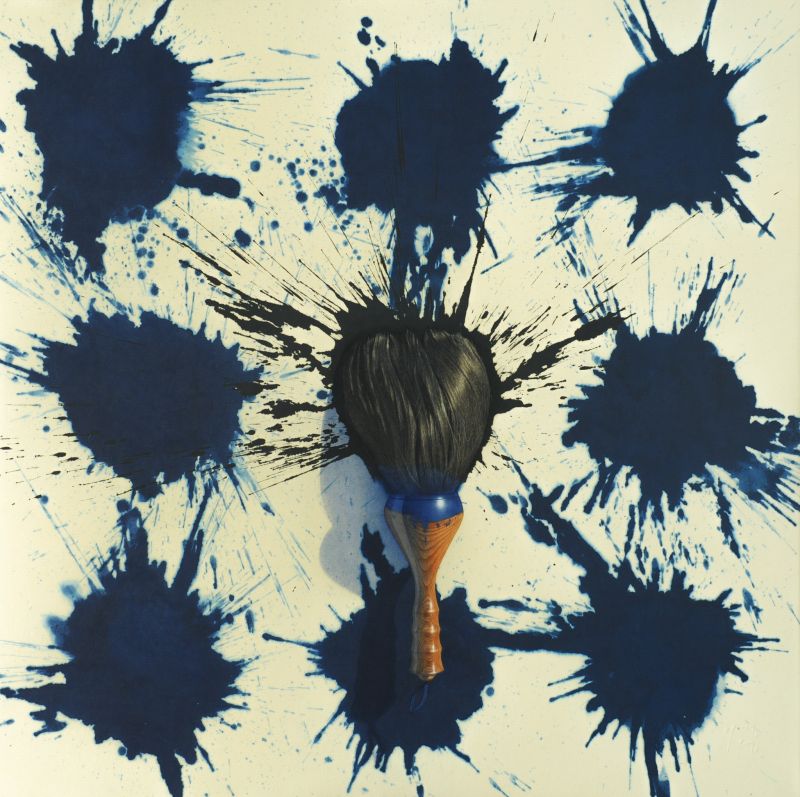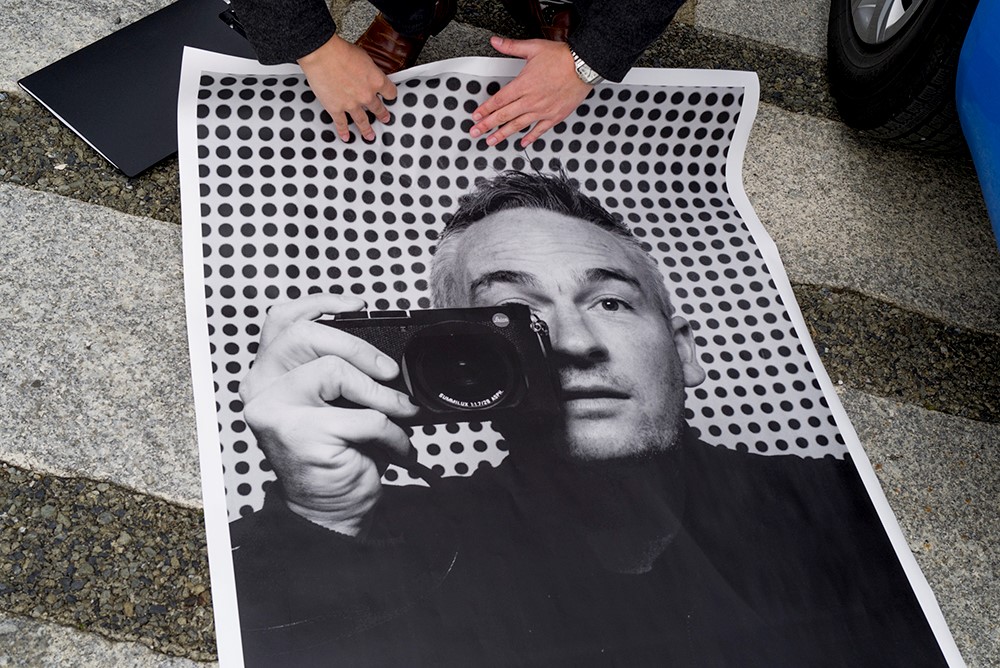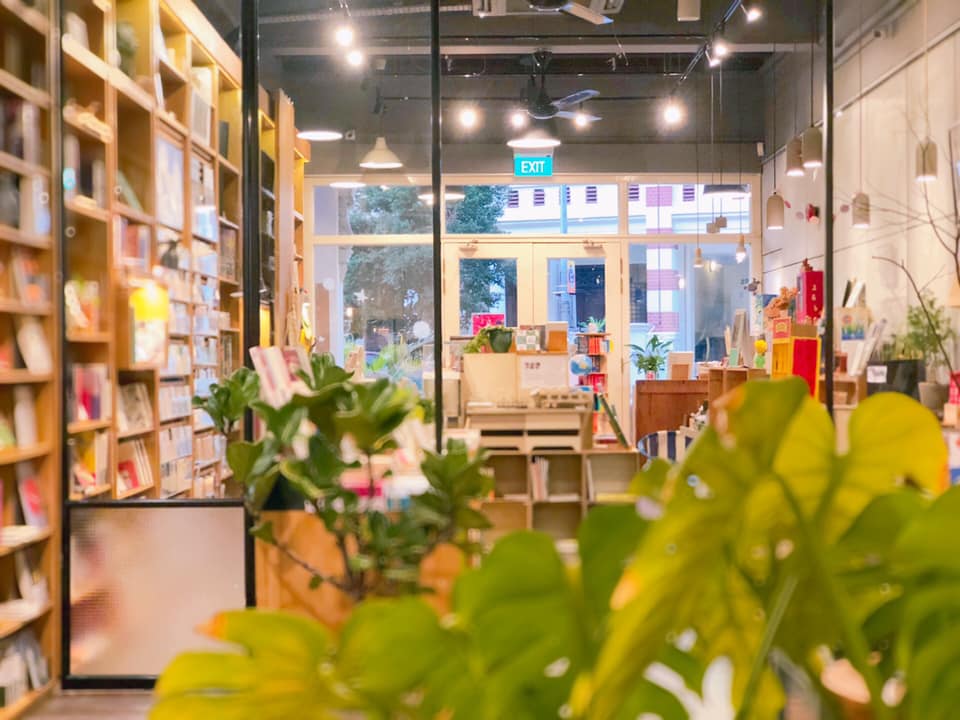The next time you need some inspiration on how to spruce up your home with plants, take a walk around the National Gallery Singapore’s rooftop. From now through Oct 27, the open-air space is home to a dazzling mass of greenery—a living, breathing installation that hides conversations about our changing landscape, when you dig a little deeper.
SEA STATE 9: proclamation garden marks the Gallery’s first Roof Garden Commission by a Singapore artist—visual artist Charles Lim. It is part of his ongoing, 10-chapter project SEA STATE examining the dynamics between land and sea.
A former national sailor, Lim was often confronted by plots of land set aside for land reclamation on his trips out to sea. The phenomenon intrigued him. “Physically it’s land, but legally it’s still the sea,” he explained. It threw him into a long-term project investigating Singapore’s land reclamation story, itself part of a larger story of our urbanisation.
The name ‘proclamation garden’, then, is a nod to the exact moment when the Presidents of Singapore sign off on the proclamation of new land, and reclaimed sites officially become state land; Lim’s attempt at grasping this state of flux.
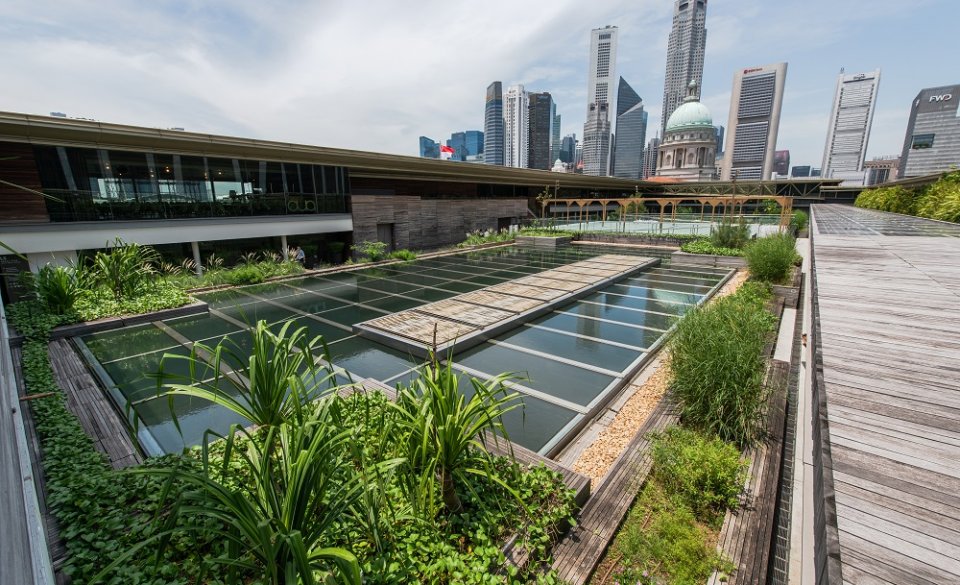
It takes an observant eye to notice the transformed Ng Teng Fong Roof Garden
With the help of Senior Curator Adele Tan and local botanical consultant Veera Sekaran, Lim filled the Ng Teng Fong Roof Garden with over 30 lesser-known plant species gathered from reclaimed areas around Singapore. While the general look of the rooftop remains the same, the existing greens were completely removed and repopulated with species from Changi, Tuas and the Southern Islands, with the centre deck used as a nursery to grow younger plants.
Meant to be a constantly evolving garden, the exhibition will change throughout its entire duration with the addition of new species—either naturally through pollination, or from Lim personally sailing out to bring new plants home.
Deeply rooted
There’s more to Lim’s little gardening project than meets the eye. For one, the plants themselves are a metaphor for the stories and botanical lives led at the fringes of Singapore. These overlooked spaces, formerly assumed to be barren, in fact house thriving ecosystems—not unlike the notion of discovering whole communities in existence where we least expect it.
Then there is the general riff off Singapore’s entire ‘Garden City’ narrative, with Lim wanting to play on how even civil language here tends to aggregate around gardening (good) and weeding (bad). The reconstructed garden brings together non-ornamental plants, invasive weeds, and even a parasitic plant Sekaran is hoping won’t spread to the other planter boxes—to find beauty in disorder, and reconsider the idyllic standard of a manicured garden.
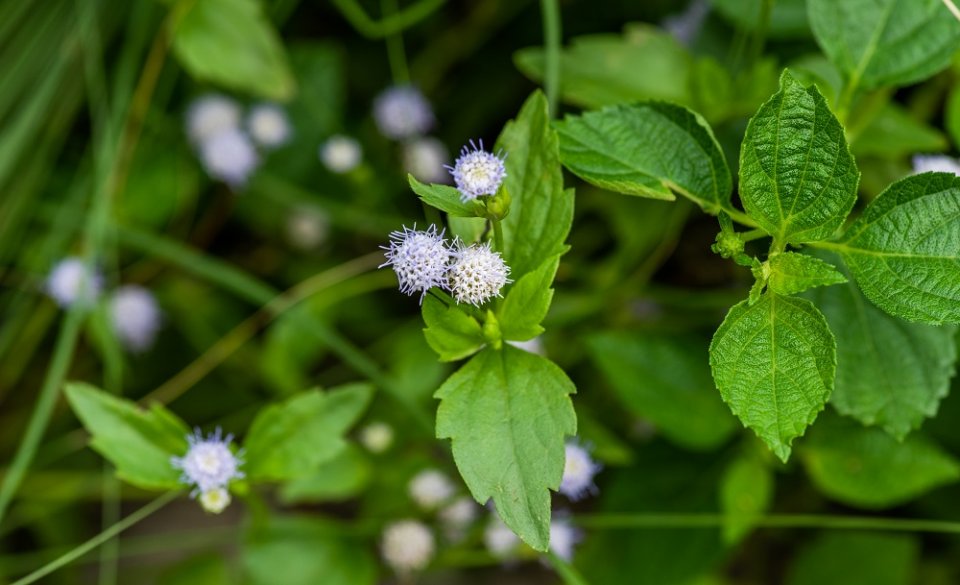
White Weed, a herbaceous weed that grows on waste grounds
But perhaps the most pressing issue it stirs is the one of our sand use—a topic of global interest that in Lim’s words has become a “security issue”. As the rest of the world scrutinises Singapore’s contentious cross-border sand importing, proclamation garden uses plants as a vehicle to navigate the sensitive topic of sand.
“The story of sand isn’t just Singapore’s; it’s a regional story,” said Lim, who has previously presented other works more explicitly political in talking about the issue. This installation doesn’t serve that; rather it hopes to gently nudge reflection.
To keep the coastal plants surviving in their new environment, and to safely transport them, the team had to transport soil and sand from the reclaimed sites in which they were found, too. While they were there, they met construction workers toiling under harsh conditions—contributing their own stories of hardship, and opening wider conversation about the full impact of our land reclamation story.
If anything, Lim hopes for the exhibition to generate conversation about the Foreshores Act instead, “a colonial legacy that we inherited” from the British. Under the act, the state can take away a person’s coastal property to use for reclamation. It’s a lesser-explored slant to looking at Singapore’s colonial history in our Bicentennial year, and will be further explored in an upcoming podcast and publication Lim is working on.
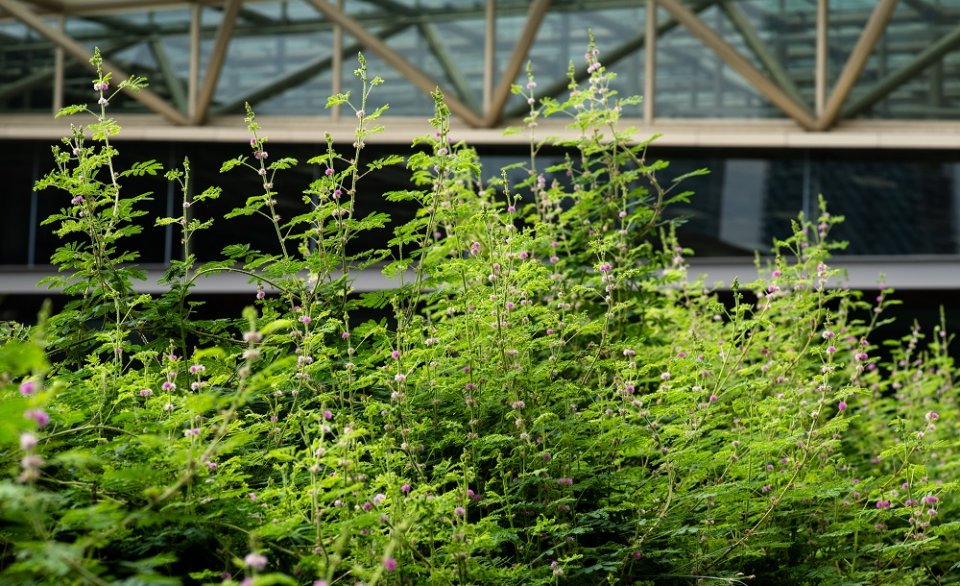
Mimosa pigra, a larger relative to the popular touch-me-nots
Ultimately, proclamation garden, in all its ever-changing glory, embodies the spirit of adventure and discovery reflected from Lim’s own sailing. You won’t find signs pointing out individual species; Lim wanted “something different from the NParks botanical experience”—a less didactic, more personal experience.
On a tour around the garden, Sekaran paused to gesture at a planter box, stuffed to the brim with various plants. Some are weeds, others visibly more dominant species; all are fighting their hardest to adapt to these new conditions atop a national institution.
“This is about survival, literally—because you’re constraining them to space,” said Sekaran. “If there’s very little space, the weeds and all the plants will start growing together, and they learn to live with each other. At some point, something will become stronger and take over everything—and this is exactly the (type of) metaphors that we talked about with Singapore. It’s about the eclectics of everyone else; the alchemy of our diversity, as citizens in Singapore. So a lot of different people living together and basically trying to find a balance with each other.”
“There’s a lot to be learnt about how plants survive and coexist with each other that people can learn from as well.”
SEA STATE 9: proclamation garden runs from Apr 22-Oct 27 at Ng Teng Fong Roof Garden, Level 5, National Gallery Singapore. Admission is free and more information is available here.



